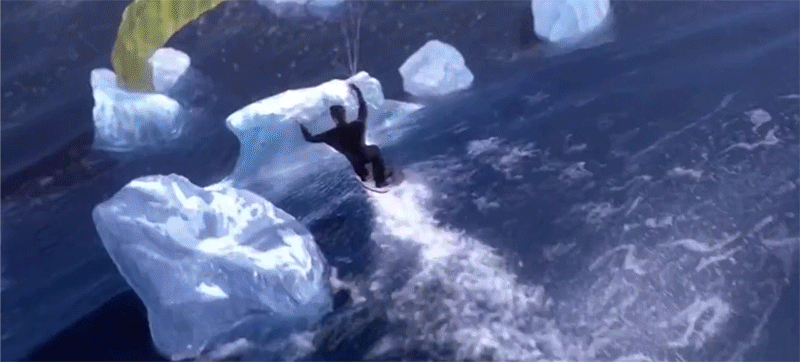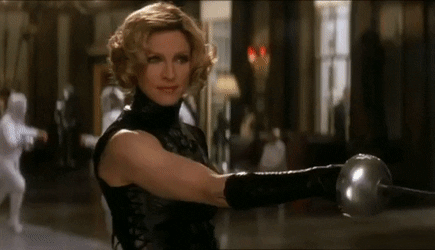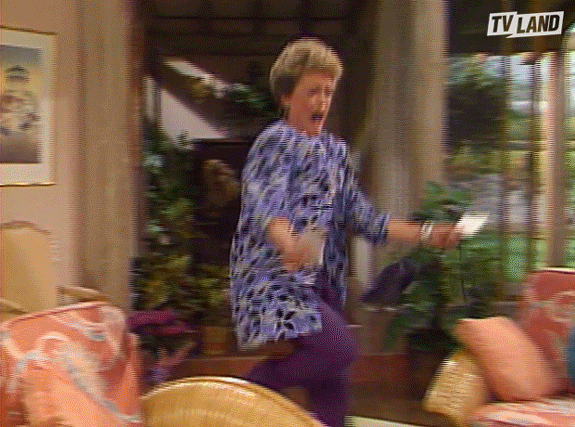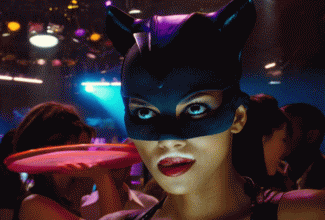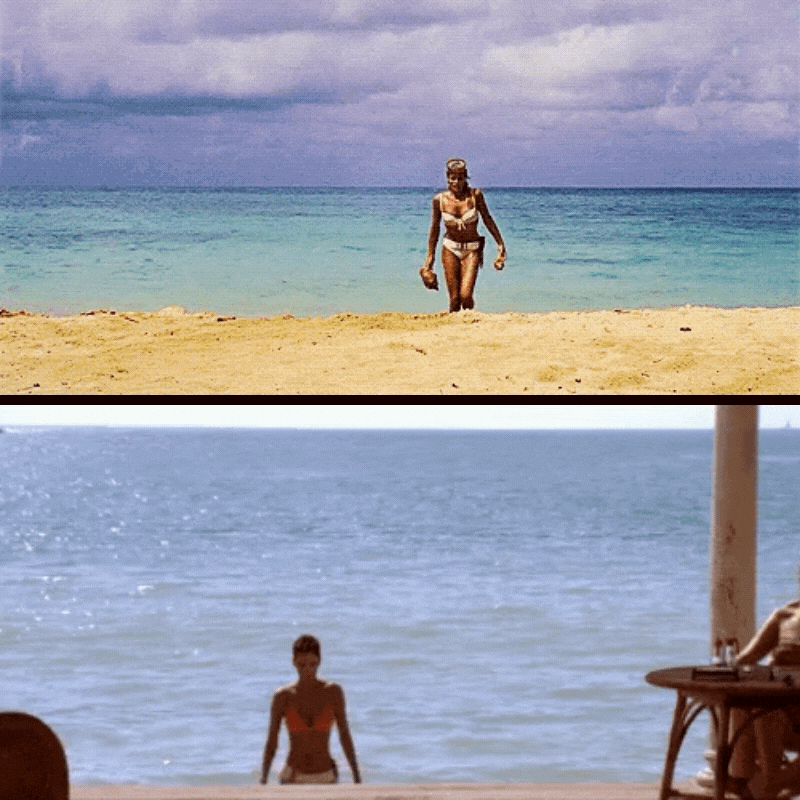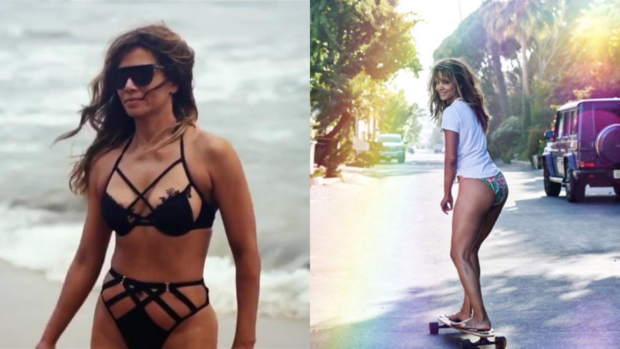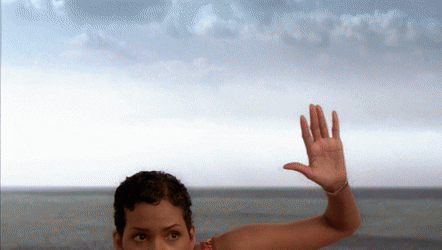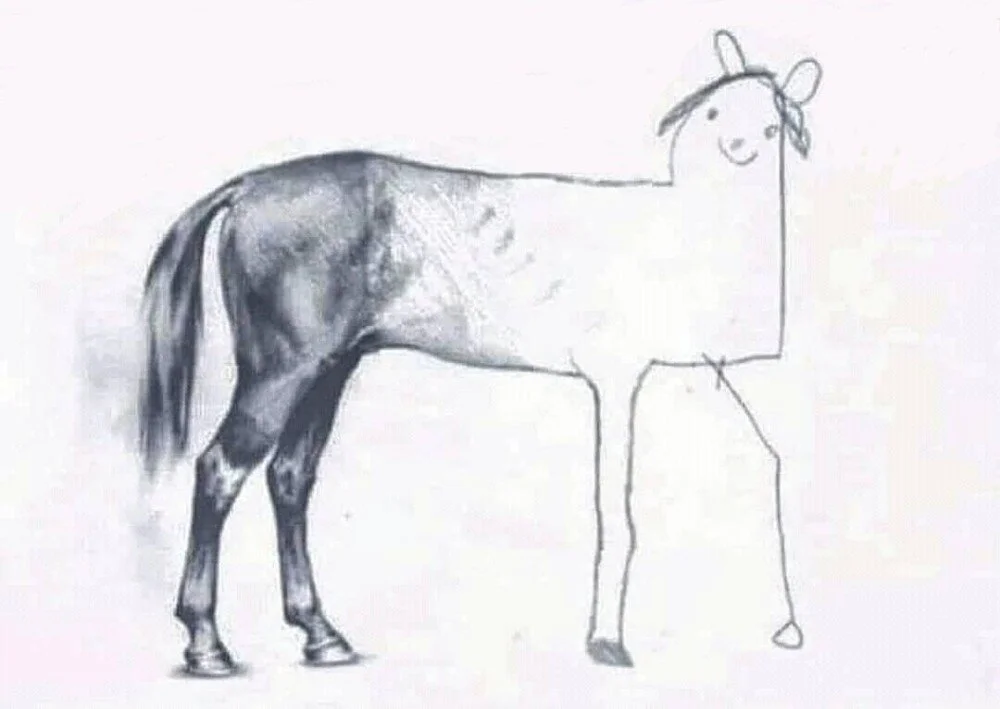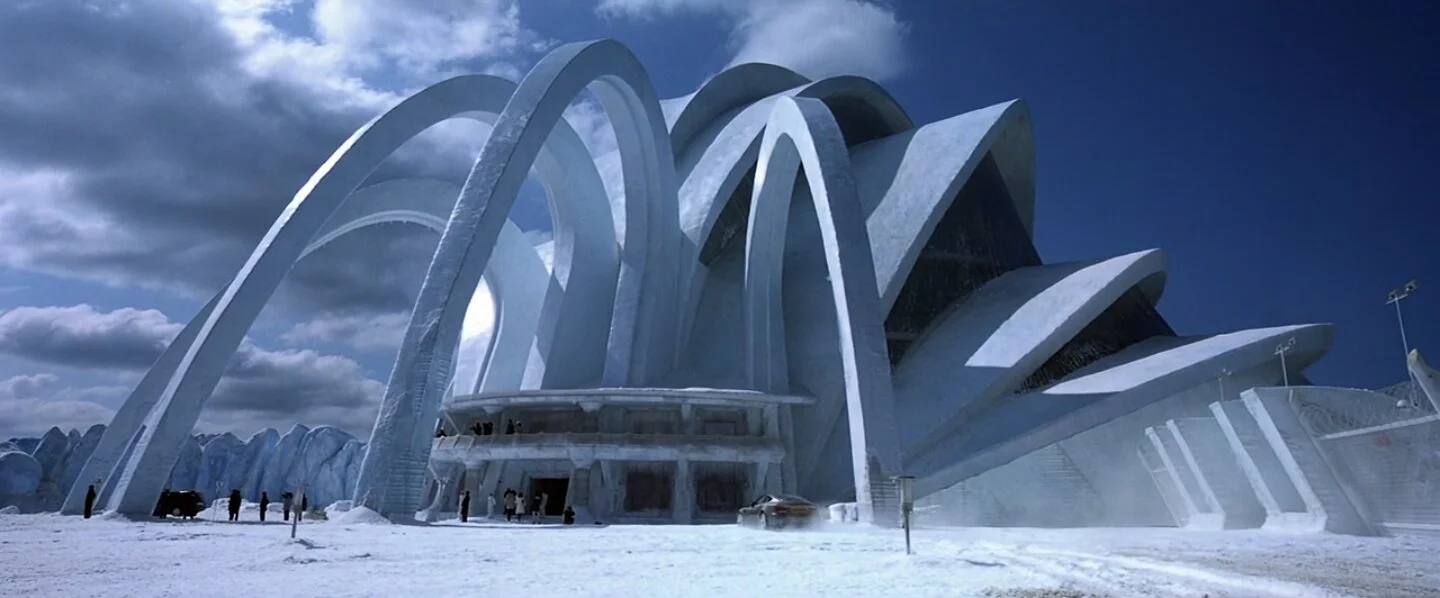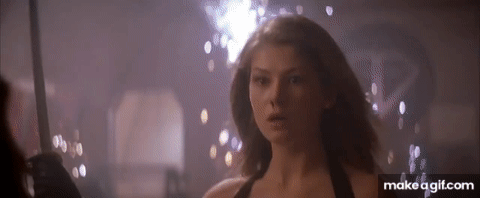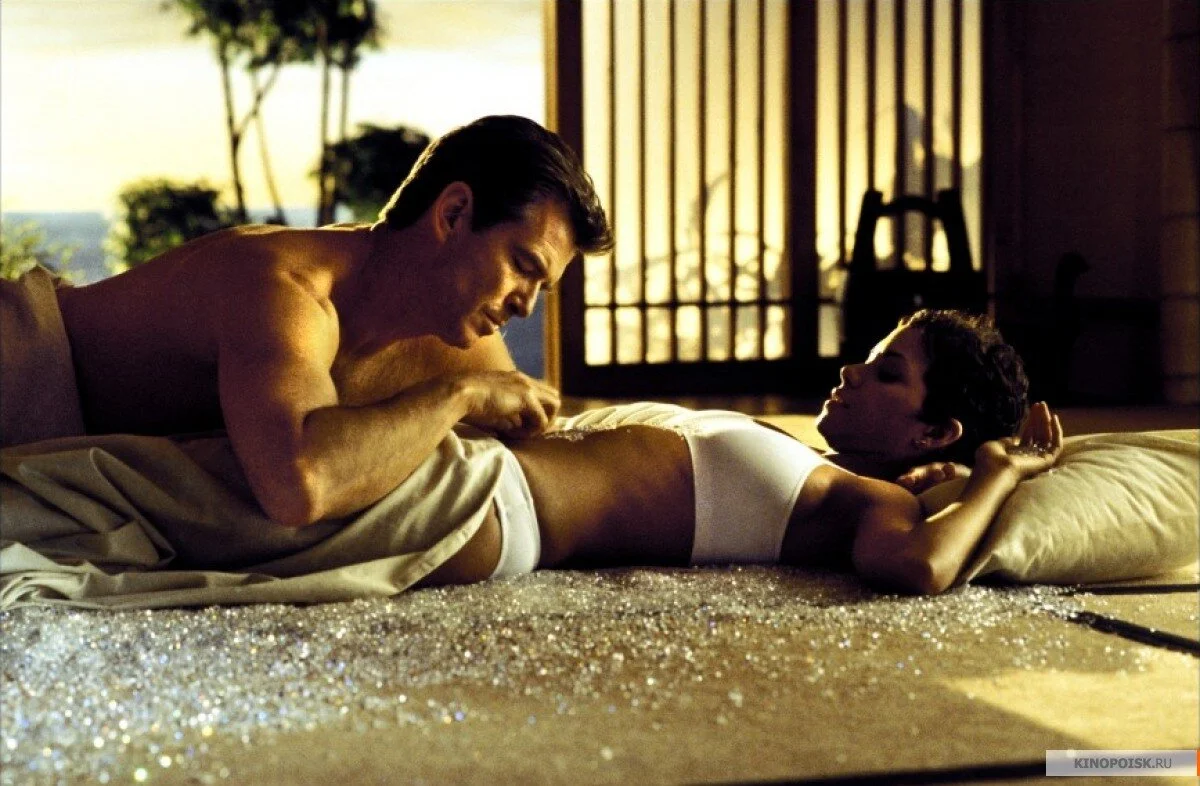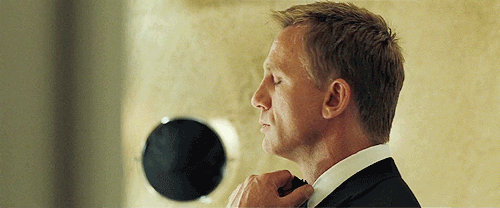Listen to the companion Raven Bond podcast here!
Released: November 2002
Producer: Michael G Wilson and Barbara Broccoli
Director: Lee Tamahori
Written by: Neil Purvis and Robert Wade
Plot:
A mission into North Korea goes wrong when Bond is betrayed by someone inside MI6 to power mad Colonel Moon. Just as he’s about to escape on a hovercraft, 007 is captured and spends the next 14 months being tortured. Eventually he’s traded for Moon’s henchman, the terrorist Zao, but M puts Bond on ice for potentially squealing during torture. Bond escapes and goes rogue, tracking Zao to Cuba where he meets NSA agent and bikini-wearer Jinx. Bond discover a link between Zao’s diamonds and overnight billionaire and adventurer Gustav Graves, and reunites with Jinx in Iceland to uncover that Graves is actually Moon, post-gene therapy to turn him into a white man as part of his quest for power because 2002 was wild. Also Miranda Frost is there, and there’s an ice palace, and a space laser.
Famous For:
Easter eggs ahoy to mark the 20th film & 40th year of the franchise
Practically ruining Pierce Brosnan’s legacy
Madonna’s legendary (for all the wrong reasons) cameo
THAT CGI
Poor Die Another Day. Overblown and overloaded, it’s gone down in history as one of the worst of the Bond series, indelibly blotting Pierce Brosnan’s copybook and forcing a rethink and reboot of the franchise.
And yet, there was excited anticipation ahead of its late 2002 release.
The film was the 20th of the Eon-produced Bond films, and marked 40 years since the onscreen debut of Ian Fleming’s creation in Dr No, with pre-promotion spruiking how the Die Another Day would pay tribute to all the Bonds we’d loved before.
The film was the first made after the September 11 terror attacks, with justifiable interest in how the world’s foremost superspy would adapt to a new geopolitical landscape.
It was also the first to feature an African-American woman as the leading Bond girl, in the (incredible) shape of Oscar winner Halle Berry. Lee Tamahori was the first New Zealand director to helm a Bond production, and it had secured the biggest pop star in the world for the theme tune AND a cameo.
Madonna: Rocking Filters Waaaay Before Insta
It even begins with reasonable promise thanks to a genuinely original premise.
The pre-credits sequence of a Bond film always shows 007 having a win - blowing up a drug silo in Goldfinger; parachuting away from murderous skiers in The Spy Who Loved Me; arresting a wanted criminal and skydiving into Felix Leiter’s wedding in Licence To Kill; the list goes on.
It’s a feel-good set up that gets the heart racing and reminds you that YOU ARE WATCHING A BOND FILM.
But Die Another Day goes in a different direction. Having surfed (let’s just ignore that weird choice) onto the beaches of North Korea, Bond infiltrates a military base as an illegal diamond trader looking to buy weapons from temperamental Colonel Suntan Moon. No wait, sorry, Tan-Sun Moon. Only slightly less like a DIY fake tanning lotion.
Colonel Moon casts his brown eyes carefully across Bond, and he’s right to be suspicious - his right hand man Zao flicks a quick pic of Bond to an unknown source who identifies him as MI6.
And so, the tables are turned. Bond is able to detonate a watch-triggered explosion - giving Zao a surprise diamond-based violent facial piercing in the process - and has to run for his life, by which of course I mean hovercraft for his life.
Colonel Moon is seemingly killed in pursuit, while Bond gets to safety by hanging off an old Buddhist bell, allowing the jaunty post-narrow-escape-from-death rejoinder of “Saved by the bell!”
Of course what he SHOULD have said was “Ask not for whom the bell tolls” because on this occasion IT TOLLS FOR THEE, DOUBLE-OH-SEVEN.
Colonel Moon’s father - General Moon - shows up with what appears to be the rest of the North Korean DPRK army, and looks forlornly at the waterfall which has just claimed his son. Bond is grabbed and taken into custody.
Dragged into an unpleasant looking hut of sorts, Bond’s head is plunged into icy water, and a very threatening yet sexy (threatenexy?) woman guard promises with just a look that there is no win for Bond this time.
The opening tones of Madonna’s Die Another Day kicks in, and we transition into the title sequence - so let’s get the song out of the way now.
I’ll admit when I first heard it, I did not like it. It seemed too voice-tuned, robotic, clubby. But seeing it paired with the opening credits sequence was a revelation.
Madonna’s lyrics are trite in parts (Sigmund Freud/analyse this), but overall reflect the theme of needing to overcome a physical challenge with mental strength.
“I’m gonna break the cycle
I’m gonna shake up the system
I’m gonna destroy my ego
I’m gonna close my body now”
The true innovation was to use the title sequence as a transition and marker of time, showing Bond’s repeated subjection to beatings, water torture, electric shocks, and scorpion stings. The sequence integrates real footage with fire and ice digital overlays, creating a nightmare vision of Bond’s survival.
Bond’s handover back to the British is pitched really well.
Hong Kong actor Kenneth Tsang adds genuine pathos to the small role of General Moon, blaming the West for corrupting his son even though he seems to acknowledge that Tan-Sun wasn’t quite the pride of Pyongyang he should have been. Moon asks Bond to name the insider at MI6, but all Bond knows is that it’s the same person who betrayed him. As we shall see later, Tsang’s sympathetic turn here is worlds apart from the other bad guys of the piece.
General Moon forces Bond onto a foggy bridge, and Brosnan genuinely conveys acceptance that he’s on his way to the big baccarat table in the sky… only to pass Zao in the mist. It’s an exchange, and Bond is quickly zapped into submission.
Bond awakes on an MI6 ship in Hong Kong Harbour, something of a throwback to the QEI secret shipwreck base. He’s none too worse for wear considering 14 straight months of torture and what one can only imagine was an imperfect diet. But then, perhaps it’s just because I’m partial to Pierce Brosnan’s half-naked mountain man guise.
Brosnan even manages some genuine emotion in confrontation scene with M, who treats him coolly as she reveals Bond is considered to have broken under torture and confessed state secrets. Bond feels he’s now been betrayed a second time.
Never one to be trapped, Bond deliberately drops his heart rate - a neat trick he honed during his imprisonment, and another reference to the Madonna song (“I guess I’ll find another way”). When medics arrive in a panic, he flawlessly turns their defibrillator back on them, bides a saucy goodbye to the nurse who gave him mouth-to-mouth, and legs it overboard.
I can even deal with Bond striding into a fancy hotel like he’s striding into a Visa commercial, demanding his usual suite and preferential treatment. Luckily an old friend, Mr Chang, is the concierge, and knows exactly how to treat a man who’s straight off the boat (unlike insert government name here).
Compiling this retrospective, I even discovered an anniversary Easter Egg I’d never spotted before:
Ru-BYE-on? RUB-yeon? Rubye-ON? Was this a cryptic Chinese phrase… oh, wait.
Ruby Eon.
Eon, of course, is the production company behind the Bond franchise. And ruby is the gem given on 40th anniversaries.
Tell you what, I felt like a goddamn hero for figuring that out, so full credit to Die Another Day for that.
As an aside - Bond actually exits the harbour next to a sign for “Yacht Club Hong Kong”. Now there’s something funny about that, because the only yacht club in Victoria Harbour is the Royal Hong Kong Yacht Club and I know that because my Uncle Jan was a longtime member there, and he’s the one who told me that it’s still got “Royal” in the title because the members all took a vote to keep it after the return of Hong Kong to China in 1997. So, simple error, or interesting backstory I’ll probably never find out?
Bond discovers Chang spying on him, but instead of being actually mad, he admits he’s known Chang was Chinese intelligence for years and could he please have a passport, money and ticket to wherever Zao is please?
Chang happily obliges as Zao has recently just assassinated three Chinese agents so Beijing is obviously thrilled for Bond to finish some revenging business for them.
Next scene, Bond fetches up in Cuba (with Cadiz, Spain, filling in for Havana), where cigar maker and British sleeper agent Raoul directs him to Zao’s likely location - a mysterious medical facility on a small island off the coast called “Los Organos”, which creepily means “The Organs”. Perhaps a 40th anniversary nod to James Bond’s magical penis?
It’s while surveilling the island pretending to be a birdwatcher (having nicked his Raoul’s copy of Birds of the West Indies, the author of which had his name ripped off by one Ian Fleming when naming his spy), that Bond encounters bathing beauty Jinx.
Much was made of Halle Berry’s casting as Bond’s NSA counterpart - she’d been Storm in the first X-Men movie, demanded and got $1 million to show her boobs in Swordfish, and then won the Best Actress Academy for Monster’s Ball all within the two years before Die Another Day. She was riding high and an obvious choice for a tenacious American spy. Also Catwoman was still a couple of years in her future.
Even more was made of Berry’s personal aquatic tribute to Ursula Andress in the way Bond spies her in the water, and her subsequent saucy exit from the waves. Except Jinx seems absolutely aware of being watched; we observe her through Bond’s own binoculars as she breaks the surface of the water in slow motion, sexy droplets flying. It’s the kind of thing that if shown at regular speed, would make her look like an Instagram narcissist (Instarcissist?)
She then struts up to get her towel, swaying her hips so savagely they would record at least a 5 on the magnitude scale. Compare that to Honey Ryder’s far more natural wading out of the shimmering turquoise of the Caribbean.
Honey is working, collecting shells to sell by the sea shore, and is is unaware of how sensual she is. I’m not saying this is a “She doesn’t know she’s beautiful!” bit of bullshit, more that Honey Ryder don’t give a shit. Jinx is so self-aware it’s almost painful.
I also never understood why they didn’t just go ahead and put Halle Berry in the white bikini - of course the coral looks fantastic, but c’mon, it’s Halle Berry, she looks fantastic IN EVERYTHING.
THIS WOMAN IS 54 YEARS OLD
Bond and Jinx have an innuendo-laden introduction about birds of prey feasting at dusk, then quickly progress to banging. Bond of course hasn’t been intimate with lady since, one assumes, about an hour before he began his mission into North Korea. For Bond, 14 months without fiery fornication has left his Walther P99 well backed up, and he and Jinx ravish each other like pigs on corncobs.
Jinx even magics up a knife and a piece of fruit (opinion seems divided between a pear, guava or fig), with no physical defence response from Bond, so we can assume the only PTSD he has is “Please Take Some Dick”.
Bond discovers Jinx missing by morning, but spots her boarding a speedboat out to Los Organos. He makes his way out there to conduct his own investigations, ditching the particularly unpleasant South African man he’d knocked out and pretended to be caring for to catch the boat over.
After finding a secret Scaramanga-style Hall of Mirrors, Bond discovers Zao - face still bespeckled with diamonds even though removing them from the epidermis seems doable - undergoing gene therapy treatment to make him a white man.
Look, at least it wasn’t the other way around, right? Right?
Bond steals some diamonds hidden in Zao’s necklace, then interrupts the gene-swapping process. Zao wakes up and he and Bond smash up the clinic before Zao escapes, all shaved head and bouncing pecs.
Meanwhile Jinx goes after the head of the clinic, who seems quite happy to admit to clients that he steals people nobody would miss and uses their… genes? Faces? Skin? Who knows… to give clients the ultimate makeover. One expects perhaps the Zao treatment is on the more extreme end, but still, it definitely sounds dodgy enough for Jinx to deliver a killing shot at point blank range.
Bond sets off the fire sprinklers and, spotting Jinx, tells her to get out of there. He only realises she’s something more than a super hot plastic surgery patient when she starts firing at Zao and the helicopter that arrives to spirit him away.
Two security guards and Bond pursue her to the top of the island’s fortress wall, where she promptly launches into her Esther Williams impression:
This really is quite fun, and I love the jaunty wave to Bond from the boat.
Back at Raoul’s, Bond and the cigar maker examine the diamonds Bond took from Zao. They’re engraved with a GG, which Raoul identifies as Gustav Graves, a freshly minted diamond billionaire who apparently found a rich vein of the substance in Iceland, of all places.
Now it’s important to note here that Raoul, a dude with an eyepiece in Cuba, is able to recognise the jewels as rebadged African conflict diamonds. Because all subsequent events from here will indicate that APPARENTLY NOBODY ELSE IN THE WORLD CAN DO THIS.
It’s from here things start to get…wobbly. And so at this point that I have to defer to my colleagues from the Die Another Day Raven Bond episode, because frankly their insights are more on point than anything I could come up with.
Co-host Stuart Layt created the best visual comparison when he described Die Another Day’s epic internal structural collapse as the filmic manifestation of the infamous horse-drawing meme:
And guest Nick Wiggins wrote the most amazing summation of the convoluted and frankly batshit crazy the villain plotline which cannot be bested:
“A bio-engineered weapons smuggler and conflict diamond launderer who has a mole inside the British Secret Service thanks to his murdering of a Sydney Olympics fencing gold medallist has charmed his way into the British elite, crafted an electro-mech suit, and is using the power of the sun - or as I like to call it, General Moon’s son Colonel Moon’s sun ray - to clear the mines from the Korean demilitarised zone in a bid to impress his father who thinks he’s dead. ”
Note how Nick didn’t even get to the whole “using gene therapy to become a white man” aspect? That’s how overloaded this film is.
Bond boards a British Airways jumbo, flicks open the in-flight mag which conveniently has a feature story on Gustav Graves, and the pulsing sounds of The Clash’s London Calling ring out. (Another one for the Easter Egg watchers - apparently the flight attendant who serves a grateful Bond his vodka martini is Roger Moore’s daughter.)
We cut to a The Spy Who Loved Me tribute, with Gustav Graves himself parachuting down to Buckingham Palace in a Union flag stitched onto the canopy.
Graves cockily answers a few media questions that conveniently give us a rounded picture of his character - he doesn’t need to sleep, he’s a dedicated fencer and he has a secret project called “Icarus” that he’s not showing anybody - before his cool Grace Kelly-wannabe personal assistant Miranda Frost tells a waiting press pack bundles him off to be invested AS A KNIGHT. After only one year in the public eye with a lucrative new diamond mine that nobody else seems to have done basic due diligence checks on.
While it somewhat bittersweet to see so many cameras and reporters (ahh, 2002, before Google and Facebook ate traditional media); the whole thing is staged so much it’s basically this classic The Simpsons moment.
Bond organises an introduction to Graves at the Blades Club, a highly fancy London fencing club where Madonna hangs out and mentors attractive female fencers like Sydney Olympics default gold medal winner Miranda Frost.
Look, I saw Madonna live in Brisbane on her first Australian tour in 1993, “The Girlie Show”. It was my first live concert and she was extraordinary. It boggles the mind how a stellar stage performer can be so wooden on camera. Still, she’s not there for long, and she looks great in her black leather uniform.
Bond once again is the worst spy, directly offering one of Graves’ own conflict diamonds as a wager for a more intense bout. Graves gleefully takes the bait, ripping off his padded shirt to reveal a white plus fours, singlet and braces combo that should not be as attractive as it is. Thank you, Dame Maggie Smith, for raising such a handsome boy.
The fencing scene, in which Graves and Bond tear Gainsboroughs apart in their quest to tear each other a new one, is great, and I won’t hear anything against it. It’s a ton of fun.
Bond is summoned to a meeting with M in yet another secret M16 base, this time in an abandoned Tube station. It’s here where the film makes its only reference to the September 11 terror attacks, when M tells Bond that she doesn’t have the luxury to see the world in black and white because “While you were away, the world changed”.
It’s a clever way of integrating a real world event that is so big it needs to be referenced, but avoiding a lengthy explanation. However, while Bond’s response “Not for me”, makes sense given his personal betrayal in North Korea and his absence from the global shock of 9/11, it rather shuts down any potential for nuance. Bond’s ego, the one so heartily slapped down by M in GoldenEye, emerged intact from the dirty confines of his torture chamber. Bond is still pissed off when his instinct isn’t given proper respect.
And look, maybe the guy has a point. His ability to spot a crook has so far proved right… 20 times out of 20.
Bond’s discoveries of diamonds in Los Organos confirm suspicions M already harboured about Graves, but Bond’s current role as “outside” the secret service means he’s in the perfect position to continue sussing out the situation at Graves’ upcoming Icarus demonstration in Iceland. The team is back together, hooray.
And now for something completely different - John Cleese as Q. No more buffoonish assistant as in The World Is Not Enough; Cleese is now the proper quartermaster which requires more professionalism and a lot more disdain for 007.
Bond’s equipment briefing begins with a fakeout. An attack on MI6 headquarters in which Moneypenny and dozens of others are murdered and M is held hostage. Bond shoots the thug holding M, and then - GASP - Q walks into view. It’s a weapons test simulation, with Bond wearing virtual reality sunglasses.
The whole thing is about 90 seconds of screen time set up at this point to justify a terrible joke at the end of the film in which Moneypenny uses the same VR sunnies to enjoy some desktop loving with Bond. Q accidentally barges in on her, leaving Moneypenny flustered and with her clothes askew. I HATE IT. It’s not a joke with Moneypenny, it’s a joke at her expense. And given it’s the 20th film, wouldn’t an actual kiss between Bond and Moneypenny at some point be actually rather fun? Even if it didn’t develop further, or perhaps Moneypenny shut it down? But no, instead we need to make the longest-running female character in the series a desperate horny joke.
Anyway, back to Q. This is the scene in which Bond receives his glass-shattering ring, and his invisible Aston Martin. But it’s also the scene where producers jammed the most amount of historical easter eggs - the jetpack, the crocodile submarine, the poisoned-tipped shoes, the cello… how many can you spot?
One final reveal before we go to Iceland - Miranda Frost is an MI6 agent working undercover.
M is weirdly interested in the fact she’s spent three years in the Cryptography branch but has yet to accept the advances of any of her co-workers. I mean, maybe M should be asking herself why collegial boning is a topic of conversation, but I guess Frost is going into battle with Bond and M knows Bond. She’s not going to stop him of course, just ensure Frost is well aware of his proclivities.
Then we hit Iceland, and everything just gets weird and a bit stupid.
The temporary ice palace hotel is a tribute of sorts to Stromberg’s Atlantis base from The Spy Who Loved Me, with a touch of the Sydney Opera House for some reason.
Graves is trialling his Chekov’s land speed racer when Bond arrives, and the pair exchange pleasantries about Donald Campbell and the quest for adventure and sleeping when you’re dead and so forth. Frost shows Bond to his palatial ice chamber, and then everyone reconvenes for a fancy party with ice-skating waitresses ahead of the Icarus demonstration.
Now look, I visited Iceland in 2018. It’s far and away one of the coolest places on the planet - both figuratively and literally. I appreciate that I’m a wimpy Queenslander that doesn’t handle cold well, and I appreciate it’s a glamorous Bond film so some sacrifice of comfort is needed, but the fact Jinx and Miranda Frost get around in slinky formal dresses just takes me RIGHT OUT of the story.
Mind you, this is the scene full of interminable sex puns, so that might have been a good thing.
Finally Icarus is revealed - and it’s a giant space laser which will reflect sunlight onto parts of the world that need more of it. Because clearly what the world needs in the 21st century is MORE warmth.
Now interestingly enough, the concept behind Icarus was ripped directly from the Moonraker novel. Hugo Drax builds the Moonraker rocket to be a “defensive” weapon for the UK, but as a secret former Nazi straps a nuclear warhead to it in an effort to destroy London.
Because of course Icarus turns out to be a secret weapon because of course it does. Of course. Because of course.
Bond is almost busted sneaking around after the demo, (having driven his invisible car a whole 20m to do so) but is saved by a sudden snog from Miranda Frost. Bond takes her back to his room to keep up the “pretence” that they are lovers. But then Frost unzips and drops her diamante-encrusted gown to the floor, revealing not even a hint of underpants, let alone thermals.
So the “pretence” of being lovers is dropped, and they actually become lovers, except the whole process is colder than the ice swan bed they have sex in. Rosamund Pike was 23 at this time, and although Miranda Frost was pitched older, it’s still a fair way from Pierce Brosnan’s 49. Their encounter is quite possibly more awkward and passionless than Roger Moore and Grace Jones in A View To A Kill.
Meanwhile, Jinx is breaking into Graves’ greenhouse in a stunning maroon catsuit that at least has more skin coverage than her formal gown.
Bond leaves Miranda to go after Graves, and frankly at this point there’s a whole bunch of stuff that just muddles together. Jinx is captured and strapped to a Goldfinger-style laser table; Bond saves her and kills Graves’ henchman Mr Kil; Bond confronts Graves about being really Colonel Tan-Sun Moon with a severe case of straight white dude cultural appropriation; Graves reveals Miranda Frost to be the mole in MI; Bond is like yeah mate tell me about it we literally just boned she’s a total mole.
OBSCURE 1980s REFERENCES.
It’s a confrontation scene full of dodgy jokes, the most egregious of which is Zao fisting Bond hard in the gut and asking “How’s that for a punchline?” Thankfully Bond exits the pundemonium in a genuinely fun special effect - deploying his sonic agitator ring to break the very floor they’re all standing on. In the confusion Bond gets away, jumping into Graves’ speed racer and taking off over the frozen lake, with Graves using his Thanos-style mecha-teach glove to control Icarus’ fire and send Bond ostensibly to his doom.
The back end of this film gets more and more cluttered with that editing effect where they rapidly speed up a wide shot, then immediately slow it back down to give the impression of excited movement. But I could forgive its overuse if director Lee Tamahori hadn’t decided to make the fateful decision to do Bond stunts with CGI.
The great joy of the Bond stunts is that they generally are done for real. Special effects, models and other in-camera tricks are of course employed, but amazing stunt men and women put their bodies on the line for this franchise. Hell, there’s even been a few deaths.
And then Tamahori has to go spit on their hard work, their sacrifice, with an unyieldingly dire scene of Bond kite surfing off a collapsing ice shelf and subsequent glacier-speckled tsunami.
It is entirely possible to argue that this scene is the worst in Bond history; at least until this point. Blofeld’s “Cuckoo cuckoo” bullshit in Spectre leaves me irrationally angry, but as we’re not there yet it can’t really count.
The whole thing is so dispiriting I don’t even really care about the pick up of Bond’s car chase with Zao, this time with Bond back in his Aston Martin. They race around the ramps of the ice palace as Bond tries to find Jinx, who’s been locked in a flooding room to drown by Miranda. I guess you could call it a … Frost/Nixing.
I am unduly proud of that joke.
Anyway, Bond kills Zao (or at least a large pointy ice chandelier does), he rescues Jinx and yada yada the movie’s not over yet.
Bond and Jinx head to North Korea where M is having it out with Michael Madsen, aka Jinx’s NSA handler Falco.
MORE OBSCURE 1980s REFERENCES.
Bond and Jinx are sent into The Hermit Kingdom to track and take down Gustav Graves/Tan-Sun Moon, and end up sneaking aboard his plane to him and Icarus.
Graves reveals himself to his father, General Moon, and tries to impress him by launching Icarus’ mighty ray and blowing up the millions of land mines scattered throughout the DMZ.
Tsang again shows his formidable acting talent in putting some gravitas behind his rejection of Tan-Sun for giving up his identity and family in a quest for power. But Graves/Tan-Sun uses his techa-mecha gloves to electrocute his own Dad. So the son kills the father, ahhh, metaphor, etc.
Shots are fired and the glass panels sensibly built into the bottom of the plane’s nose start peeling off, taking with them Graves’ North Korean military allies one by one in slapstick fashion. Bond and Graves duke it out, with Graves using his Thanos glove to give Bond repeated shocks.
Meanwhile Jinx, who’s gone to take over control in the cockpit, is surprised by Frost, who’s stripped down to a very casual pyjama pants and black sports bra combo for Graves’ epic destruction of the Korean peninsula.
Of course, you can’t have an awesome girl sword fight with Halle Berry’s bodacious bod swamped in overly large military fatigues, so they engineer a disrobing by having her use her shirt as a cape. Now in some historical fencing, the cape defence is totally legit. But I don’t think historical accuracy is what they were going for here.
Anyway, it’s a fun enough fence in which Jinx eventually spears Frost through the heart with a copy of Sun Tzu’s The Art of War, a tome referenced earlier by Graves and by any number of radio station program directors I encountered in the 2000s.
Bond manages to dispatch Graves by both shocking him with his own suit, and pulling the cord on his parachute so he is sucked back into one of the jet engines. “Time to face destiny!” “Time to face gravity!” is the final banter there. It’s pretty impressive that not even the dodgiest Roger Moore Bond films had a bad dude birdstrike finale, and yet here we are.
Bond and Jinx strap themselves into a helicopter and manage to get it started mid-air after dropping out of the crashing plane. It’s at this point that there is one amazing line of dialogue from Bond, who tells a commitment-phobic Jinx that “My relationships don’t last very long either”. As far as I can recall, Bond has never uttered a sentiment like this onscreen, ever. Why here, why now? What’s the point of saying that - especially when there’s no actual status quo change after it’s said?
Because the end of the film is M and M16 trying to track down Bond and Jinx’s location, and the pair of them having awkward intimacy on a pile of loose diamonds. The jewels had been stashed in the helicopter they escaped in, which means they DRAGGED A BAG OF DIAMONDS INTO THE HOUSE JUST SO THEY COULD HAVE SEX ON THEM. I don’t know why this vexes me, perhaps even more so than the weird “Leave it in, it fits perfectly” dialogue that just reveals Bond to be suckling at a diamond wedged in Jinx’s belly button.
Oh NOW she’s in a white bikini.
Sigh.
This is truly a hot mess of a film. And yet, and yet, I’d probably still watch it over some of the later Moores, because it does start with promise and contain some really fun sequences. But the collapse of internal logic in this film is as complete as the collapse of the Icelandic ice palace.
Die Another Day went on to make $432 million at the worldwide box office, even as it got a critical panning, which showed there was still love for the franchise, but not so much that fans were unwilling to voice their concerns with its direction.
The reaction did force Eon Productions to rethink the franchise and make some changes - even to the point of Bond himself. Brosnan had completed the four films he’d signed on for, but was still keen to continue and felt he still had popular support as the superspy, which is essentially true. People look back now and rag on Pierce, but contemporary audiences were fine with him. But apparently he got a call one day from Michael G Wilson and Barbara Broccoli saying “Thank you, you’ve been a great Bond.” And that was it.
You’d think if they were looking at fixable problems they might look to Purvis and Wade, the screenwriters, and make a change. But they stay, and wind up delivering one the sharpest turn arounds in quality in cinematic history.
Thank you for reading this instalment of the James Bond Retrospective! If you enjoyed it, you can sign up to support the series and my other writing/podcasting efforts via my Patreon page. Thanks to all of you who are already members; your support is truly invaluable. You can listen to the companion Raven Bond Die Another Day podcast here:
Stu and I are also ranking the Bond films as we watch and podcast about them. Here’s how we stand:
Yes, you read that right - finally something worse than Thunderball in Stu’s estimation. As for me - I know it’s not a great movie. But the initial set-up of Bond being captured, the cleverness of the title sequence and Madonna’s song, the balls-out fun of the Los Organos clinic destruct-athon and the fencing scene mean it will draw me in more often than the last two Roger Moore’s will. So I had to rank it third-last!
Come back next time as we enter a whole new Bond era with the shortest - and blondest - Bond yet, Daniel Craig!

